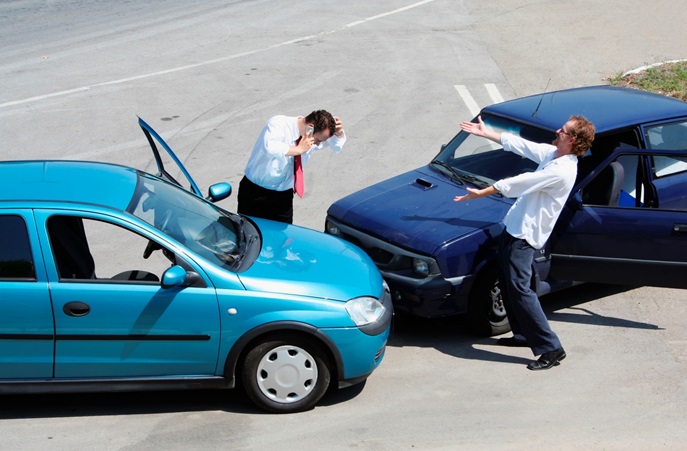Did you know that 1 in 7 people do not wear a seatbelt while driving? Although this doesn’t make you at fault for a car accident, it can lead to major injuries if you are in one.
If you do get in a vehicle crash, how does the payout process work? It all depends on who is at fault.
Determining car accident fault isn’t a one size fits all solution. Keep reading to learn how the process works in practice.
What Is Fault in an Accident?
Car accident fault refers to the party that caused a vehicle crash. In some car accidents, fault is easy to assign while others require a more complicated process to figure out.
States differ in their laws about how fault is determined. A car insurance company needs to know who the at-fault driver is to determine the party responsible for damages.
How to Determine Car Accident Fault
Those involved in determining car accident fault are insurance companies, police, and the involved drivers. These are the different ways that fault can be assigned:
Involved Drivers
Involved drivers in a car accident can decide who is at fault on the scene. In some cases, a driver admits guilt while other drivers accuse each other of being the cause of an accident.
Admitting fault means you are financially responsible for the incident.
If you want to prove your innocence and don’t think you are at fault, it helps to gather evidence at the scene. You can take pictures of the cars and ask for witness contact information.
You’ll need to exchange car insurance information with the other driver while you wait for the police to arrive.
Police Report
Knowing what to do after a car accident can help you receive compensation if you aren’t at fault. Even minor accidents should involve the police because they can analyze the scene to find out who the at-fault party is.
They can make a diagram of the accident while noting the extent of the damage. The location of damages on the car also matters in a police report.
Police are typically instrumental in determining if there are any outside factors that caused the accident such as texting and driving or driving under the influence.
Car insurance companies receive and read the police report once it is filed.
Insurance Companies
Based on the information the car insurance company receives, they will decide which claims to fulfill and which they don’t. If the at-fault driver attempts to file a claim through your insurance, they are going to get denied.
When the other party is at-fault for the accident, your insurance company will contact the driver’s insurance company to seek a payout for the damages caused.
You can work with your car insurance company after an accident by reporting the facts, gathering evidence, and filing your claim.
Fault Not Determined
There are situations where fault cannot be determined by any of the above three parties. If this happens to you, there are some options you can exhaust before giving up.
Drivers can choose to use arbitration to settle faults without going to court. A neutral arbiter will decide on the percentage of fault each driver is responsible for. This often happens when both parties are responsible for the accident.
Drivers can also file a lawsuit with a small claims court to seek compensation. Drivers in states like Virginia, North Carolina, and Maryland cannot recover damages even if they are 1% at fault.
In most states, you can sue another driver for all of the fault or a specific amount. If you do sue for a portion of the damages, you might be forced to pay your percentage of the damages as well.
If you choose to sue or are being sued for fault, it’s best to hire an auto accident lawyer. Discover more about how a car accident attorney can help in this situation.
What Are No-Fault States?
Knowing how fault is determined doesn’t apply when it comes to no-fault states. In these areas, drivers use their personal injury protection (PIP) to pay for their injuries regardless of who is at fault.
No-fault state drivers also carry liability coverage to pay for medical and vehicle damages that they cause another driver. If you are guilty of causing an accident in a no-fault state, your liability coverage pays the damages.
Does Car Insurance Cover At-Fault Accidents?
If you are responsible for an accident, you might be wondering if your car insurance will cover the damages you are responsible for. The type of car insurance you have will impact your claim.
Car insurance requirements vary by state so it’s important to understand the laws where you live.
The most common types of car insurance policies are collision, bodily injury liability insurance, and comprehensive. We’ll go over what these mean in an at-fault accident.
Collision
Collision insurance can help pay for damages to your car whether an accident is your fault or not. Collision insurance has a deductible that you’ll need to set up based on your budget.
The higher the deductible, the lower your premiums are.
Bodily Injury Liability Insurance
Bodily injury liability insurance helps cover the cost of injuries to the other driver, their passengers, and your passengers when you are at fault for an accident.
This goes beyond medical expenses. If you are sued for lost wages, funeral costs, or pain and suffering, this policy helps. You can also use this coverage to pay your legal fees.
This is an ideal policy to have in your insurance plan if you cause a car crash.
Comprehensive
Comprehensive car insurance is optional for drivers but can cover you when there is an accident that doesn’t involve another vehicle.
If you hit an animal or experience vehicle damages from vandalism or hail, this is the policy that can help. It isn’t used when you hit another vehicle so even if you are at fault and have this policy, it won’t help you.
What to Do After a Car Accident
Knowing what to do after a car accident can protect you and your ability to receive compensation.
If you can’t come to an agreement about who is at fault, the police and your insurance company might decide for you. If car accident fault cannot be determined, it’s best to have a lawyer by your side for what’s to come next.
Understand the laws in your state and use this guide to get through the process. For more informative posts like this, check out the other articles on our blog.








